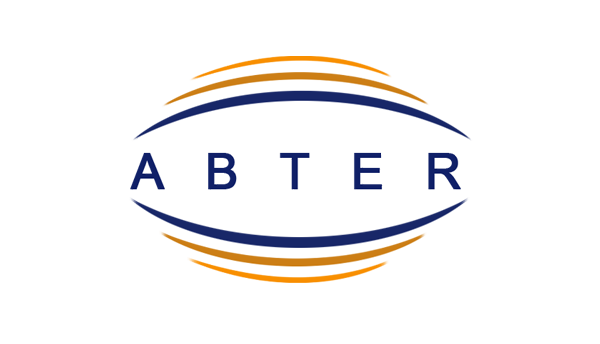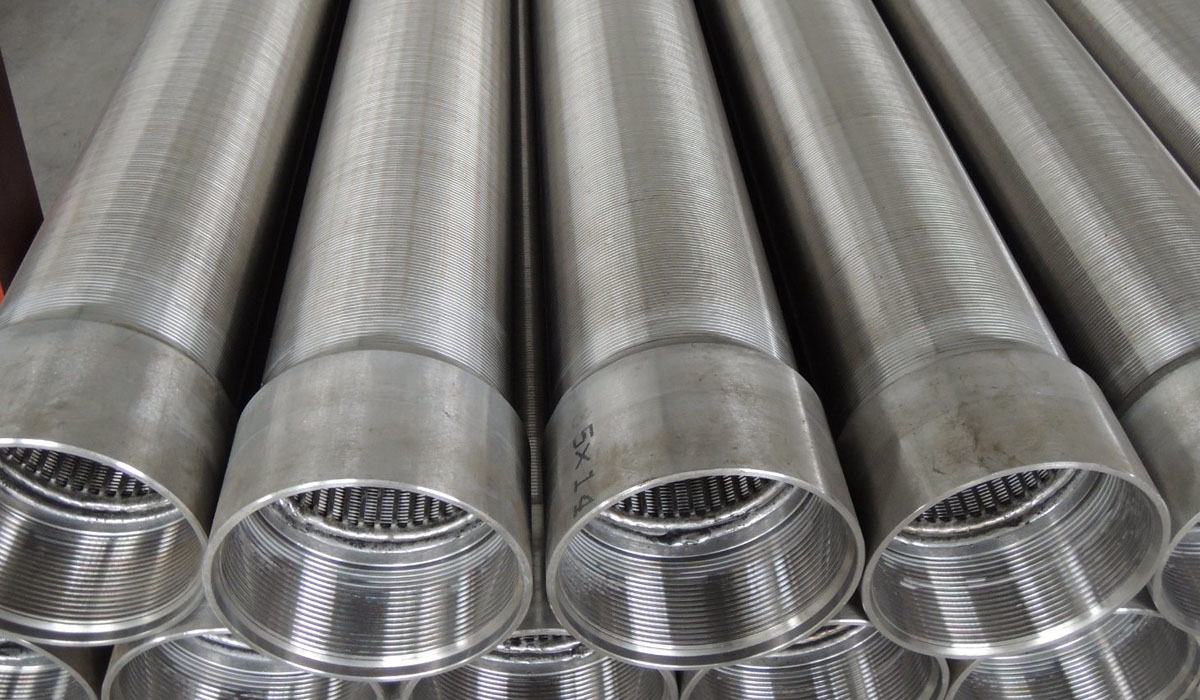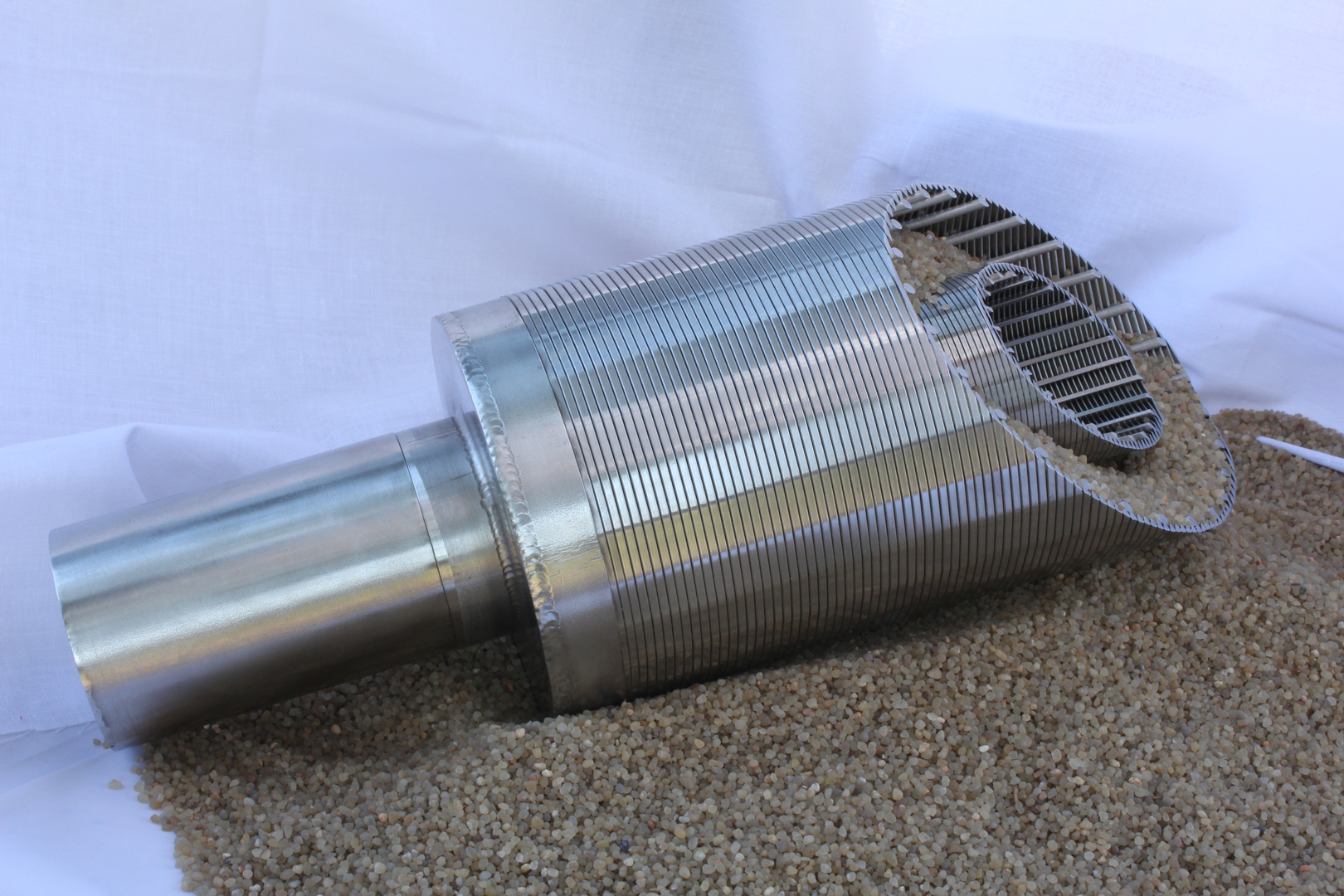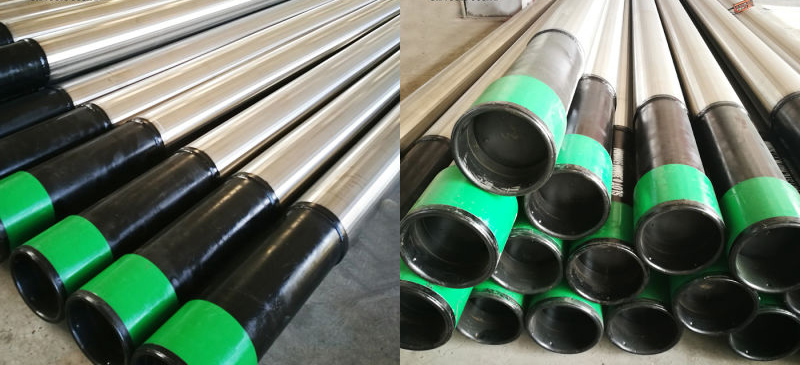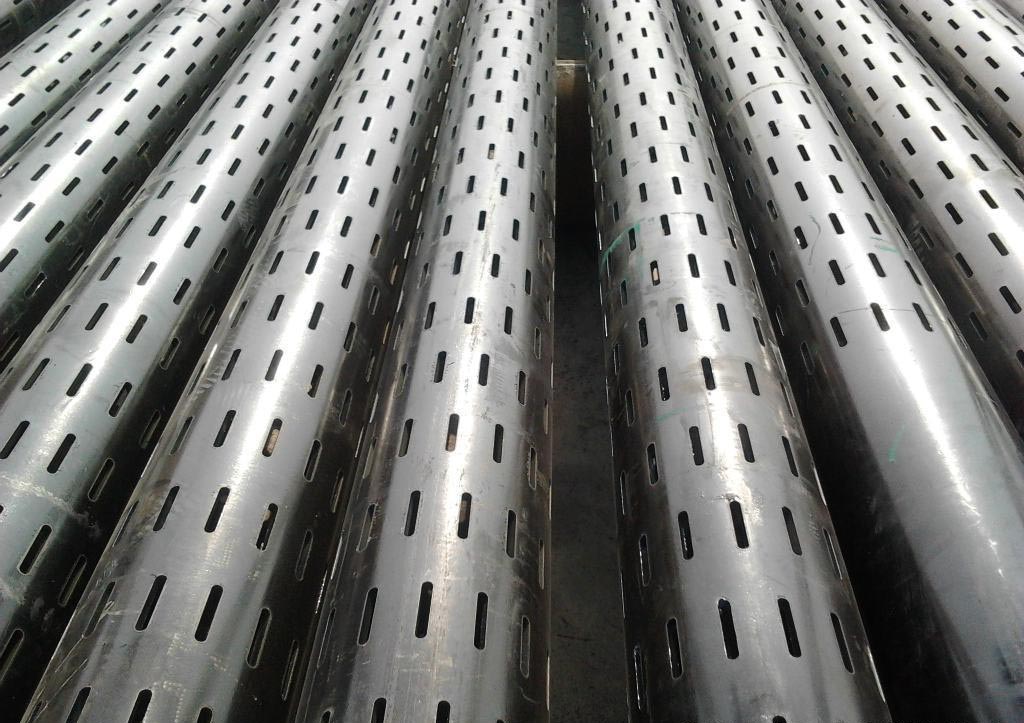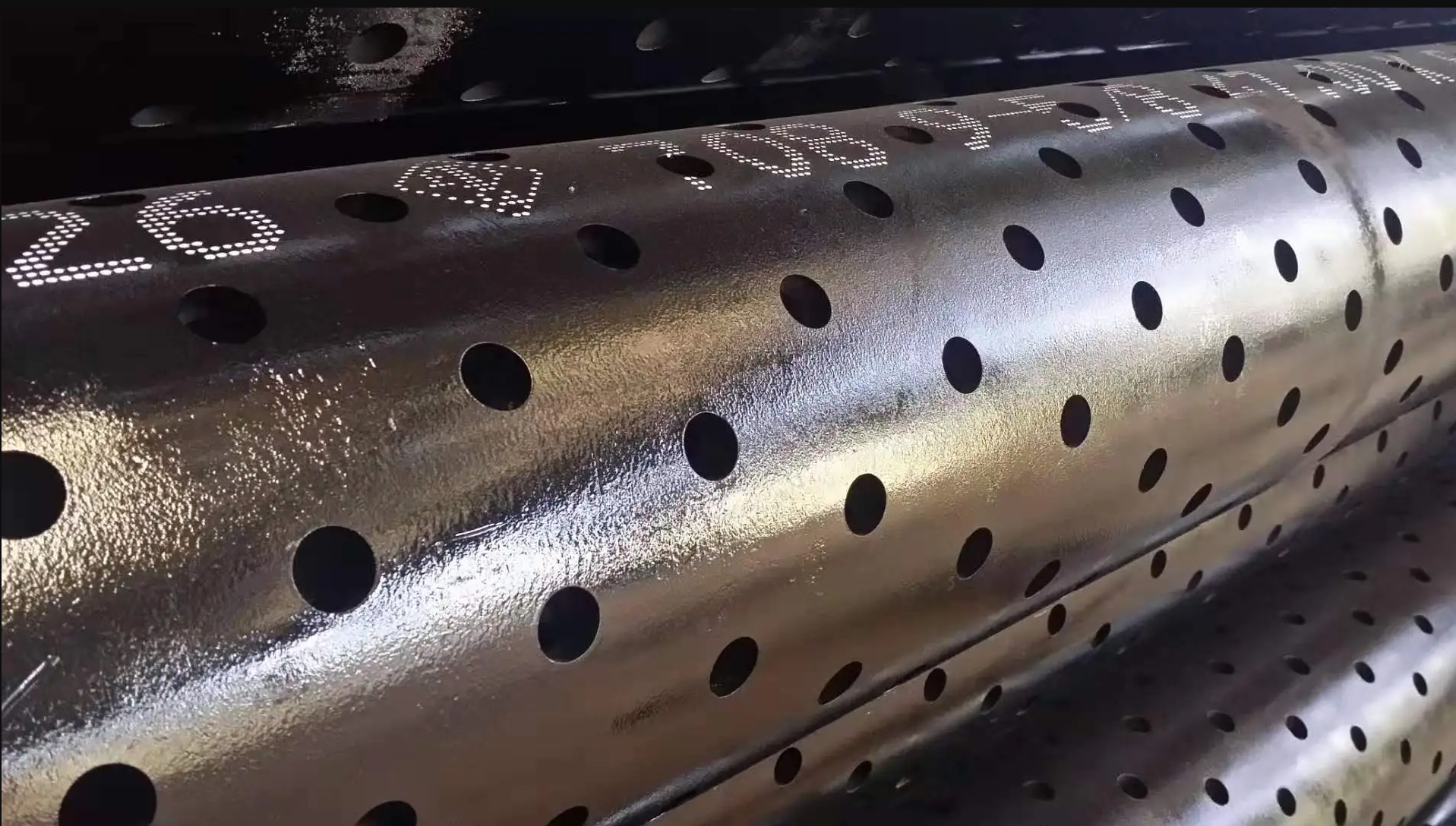Bridge Slotted Screens and Casing Pipes
Introduction to Bridge Slotted Screens and Casing Pipes
Bridge slotted screens and casing pipes are critical components in well completion and filtration systems, widely used in water wells, oil and gas wells, geothermal projects, and industrial applications like municipal water supply and petrochemical processing. These screens feature a unique bridge-shaped slot design, punched into flat sheets of carbon steel, galvanized steel, or stainless steel (e.g., 304, 316L), which are then rolled and welded into cylindrical pipes. The bridge slots, typically 0.5–5 mm wide, are staggered to enhance mechanical strength and prevent clogging by sand and gravel, ensuring efficient fluid flow and sand control. Casing pipes, often unslotted, provide structural support to the wellbore, while slotted screens filter out debris while allowing fluid passage.
These components offer high strength, corrosion resistance with appropriate coatings, and cost-effectiveness compared to high-performance alloys like Inconel® 718. Their design balances hydraulic efficiency and structural integrity, making them suitable for harsh environments, including sour service conditions when compliant with NACE MR0175. This article explores their chemical composition, mechanical properties, corrosion resistance, manufacturing processes, applications, and dimensional tolerances, with comparisons to Inconel 718, Incoloy 901, ASTM A671 CC60 CL22, and API 5L PSL2 BNS. Detailed tables summarize key parameters, providing a valuable resource for engineers and industry professionals.
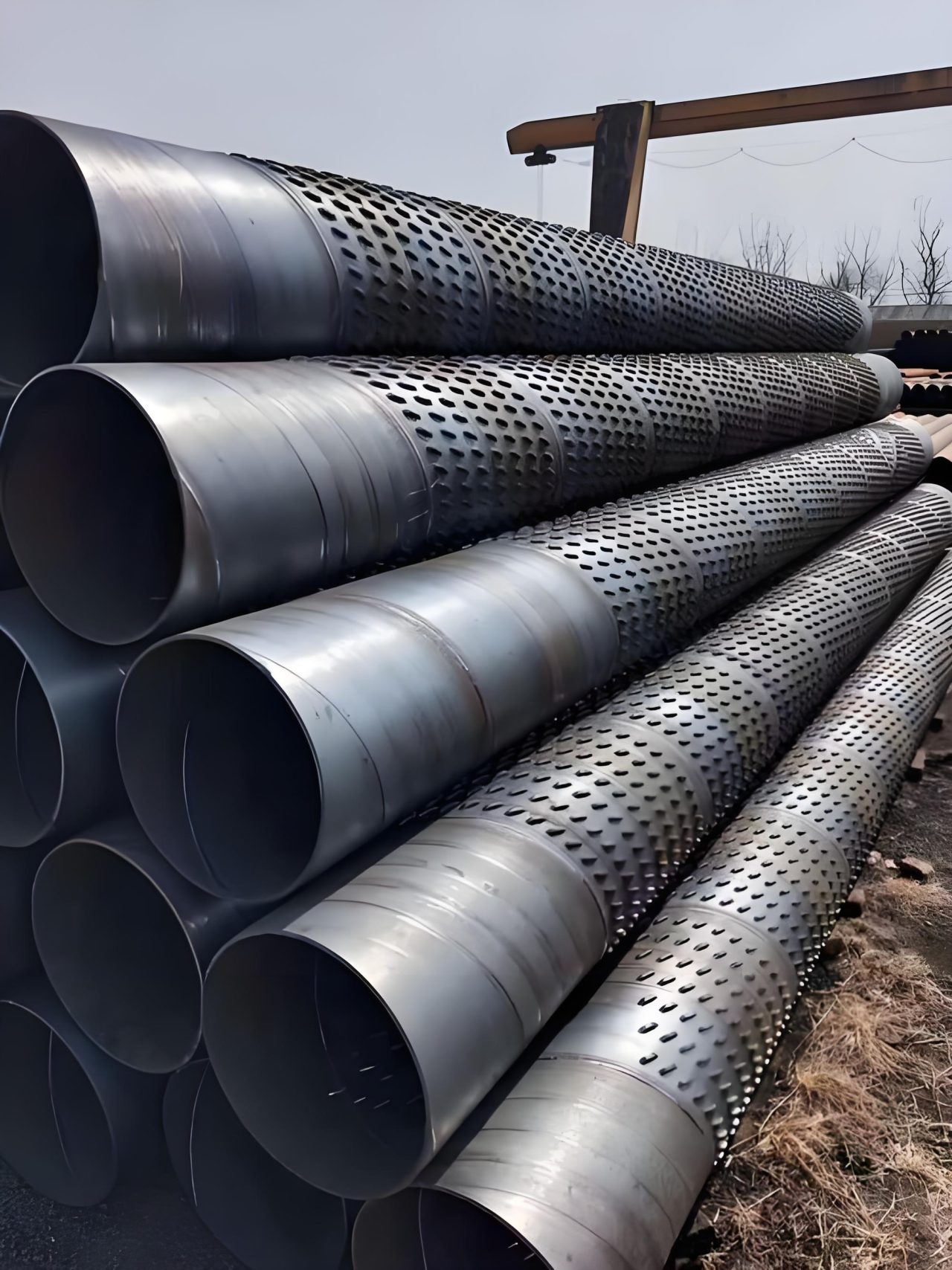
Chemical Composition and Material Analysis
Bridge slotted screens and casing pipes are manufactured from materials like low-carbon steel (e.g., Q235, ST37-2), galvanized steel, or stainless steel (304, 304L, 316, 316L, 430), chosen based on application requirements. Low-carbon steel typically contains carbon (≤0.20%), manganese (≤1.40%), phosphorus (≤0.045%), sulfur (≤0.045%), and silicon (≤0.35%), offering good weldability and moderate strength. Stainless steel grades (e.g., 304: 18–20% chromium, 8–10.5% nickel) provide superior corrosion resistance for aggressive environments. Galvanized coatings or anti-corrosive paints enhance durability, particularly for carbon steel in water wells. For sour service, materials are selected to meet NACE MR0175 hardness limits (≤22 HRC).
Compared to Inconel 718 (50–55% nickel, 4.75–5.50% niobium), bridge slotted screens use less alloyed materials, prioritizing cost over extreme corrosion resistance. Incoloy 901 (40–45% nickel) offers better corrosion resistance than carbon steel but is less suited for sour service without processing. ASTM A671 CC60 CL22 (0.04–0.27% carbon, 0.85–1.20% manganese) and API 5L PSL2 BNS (≤0.12% carbon, CEpcm ≤0.25%) are closer in composition to carbon steel screens but optimized for pipeline strength and sour service, respectively. The low carbon content and galvanizing of bridge slotted screens reduce sensitization and rust, ensuring longevity in water and oil wells. Material selection depends on environmental conditions, with stainless steel preferred for corrosive settings and galvanized steel for cost-sensitive projects.
Mechanical Properties
Bridge slotted screens and casing pipes are designed for high mechanical strength to withstand twisting, compressive, and tensile forces in well environments. Low-carbon steel screens (e.g., Q235) have a yield strength of approximately 235 MPa and tensile strength of 375–500 MPa, with elongation of 20–26%, ensuring flexibility during installation. Stainless steel screens (e.g., 304) offer higher tensile strength (515–690 MPa) and better corrosion resistance, suitable for deep wells. The bridge slot design, with staggered openings, enhances structural integrity by reducing stress concentrations, achieving collapse strengths comparable to API J55 casing (379 MPa yield). Slot sizes (0.5–5 mm) are tailored to balance strength and open area (10–20%).
Compared to Inconel 718 (yield strength 1035 MPa, tensile strength 1275 MPa), bridge slotted screens have lower strength but are sufficient for well applications and far less costly. Incoloy 901 (yield strength ~900 MPa) is stronger but not optimized for sand control. ASTM A671 CC60 CL22 (yield strength 220 MPa) and API 5L PSL2 BNS (245 MPa) are designed for pipeline applications, with CC60 offering low-temperature toughness (-46°C) and BNS ensuring sour service compliance. The bridge slot’s unique structure minimizes clogging, maintaining hydraulic efficiency under high compressive loads. Mechanical testing, including tension and collapse tests, ensures reliability in demanding conditions like geothermal and oil wells.
Corrosion Resistance and Sour Service Compliance
Corrosion resistance in bridge slotted screens and casing pipes depends on material and coating. Carbon steel screens (e.g., Q235) rely on galvanizing or coatings like waterborne paint, fusion-bonded epoxy (FBE), or polyethylene (PE) to resist rust and chemical attack in water wells. Stainless steel screens (304, 316L) offer inherent resistance to pitting and crevice corrosion due to their chromium (18–20%) and nickel (8–12%) content, making them suitable for saline or acidic environments. For sour service, materials are selected to meet NACE MR0175, with hardness controlled to ≤22 HRC to prevent sulfide stress cracking (SSC) in H2S-rich conditions. The bridge slot design reduces particle entrapment, minimizing localized corrosion.
Inconel 718 (50–55% nickel, 2.8–3.3% molybdenum) provides superior corrosion resistance in high-temperature, chloride-rich environments, unlike carbon steel screens, which require coatings. Incoloy 901 is less corrosion-resistant than Inconel 718 but outperforms carbon steel. ASTM A671 CC60 CL22 and API 5L PSL2 BNS, both NACE-compliant, rely on coatings for external corrosion protection, similar to carbon steel screens. Stainless steel bridge slotted screens are preferred in corrosive wells, while galvanized screens offer a cost-effective alternative for less aggressive conditions. Proper coating application and maintenance are critical to extending service life in harsh environments like oil and gas wells.
Manufacturing and Processing
Bridge slotted screens are manufactured by punching precise bridge-shaped slots into flat sheets of carbon steel, galvanized steel, or stainless steel (e.g., 304, 316L), which are then rolled into cylinders and welded using electric resistance welding (ERW) or spiral submerged arc welding (SSAW). Slot sizes (0.5–5 mm) are controlled to ensure uniform filtration, with staggered patterns reducing strength loss. Casing pipes, typically unslotted, are produced similarly but prioritize structural integrity, often using API J55 or N80 grades. The process includes edge milling, forming, welding, slag removal, and non-destructive testing (ultrasonic, radiographic) to ensure weld quality. Galvanizing or coating (e.g., FBE, PE) is applied to carbon steel to enhance corrosion resistance.
Compared to Inconel 718, which requires vacuum induction melting and complex heat treatments, bridge slotted screens are simpler to produce, using standard steelmaking and punching processes. Incoloy 901 involves similar high-alloy processing, while ASTM A671 CC60 CL22 and API 5L PSL2 BNS use LSAW processes with normalizing or controlled rolling for specific properties. The bridge slot’s partial punch-out design increases mechanical strength, and precise slot control ensures high filtration efficiency. Installation requires careful handling to avoid deformation, with connections like threaded couplings, flanges, or welded ends facilitating assembly. These processes ensure reliability in water wells, oil wells, and industrial applications.
Applications
Bridge slotted screens and casing pipes are versatile, used in water wells, oil and gas wells, geothermal projects, mining, municipal water supply, petrochemical processing, and construction. In water wells, screens filter sand and gravel, ensuring clean water extraction, while casings provide structural support. In oil and gas, bridge slotted screens control sand production in cased-hole completions, preventing equipment damage and enhancing well productivity. Geothermal wells benefit from their high strength and corrosion resistance, while mining and construction use them for dewatering and foundation stabilization. The bridge slot design’s high open area (10–20%) and low clogging risk make it ideal for high-flow applications.
Unlike Inconel 718, used in high-temperature aerospace and sour gas components, bridge slotted screens prioritize sand control and cost-effectiveness. Incoloy 901 is limited to aerospace applications, lacking filtration capabilities. ASTM A671 CC60 CL22 is suited for low-temperature pipelines, and API 5L PSL2 BNS for sour service pipelines, but neither offers sand control like bridge slotted screens. Applications like the Spanish slag transport pipeline demonstrate their adaptability in specialized projects. With customizable slot sizes and materials, these screens and casings meet diverse industry needs, from potable water extraction to oil production in harsh environments.
Dimensional Tolerances
Dimensional tolerances for bridge slotted screens and casing pipes are critical for ensuring fit and performance. Screen pipes range from 4 to 80 inches in outer diameter (OD), with wall thicknesses of 3–10 mm and lengths up to 6 m. Slot widths are 0.5–5 mm (±0.1 mm), depending on wall thickness, with open areas of 10–20%. Tolerances for OD are typically ±1% (e.g., ±2.19 mm for 219 mm OD), and wall thickness tolerances are ±10% (e.g., ±0.5 mm for 5 mm). Casing pipes, often API J55 or N80, follow API 5L tolerances: ±0.75% for OD and ±10% for wall thickness. Weld seam height is ≤3.2 mm, and straightness is ≤0.2% of length.
Compared to Inconel 718 (ASTM B637: ±0.25 mm for small diameters), bridge slotted screens have looser tolerances due to their larger sizes and filtration focus. Incoloy 901 follows similar precision standards, while ASTM A671 CC60 CL22 (±0.5% OD) and API 5L PSL2 BNS (±0.75% OD) have comparable tolerances for large-diameter pipes. Slot precision is critical for filtration efficiency, and end connections (e.g., threaded, flanged) meet standards like API STC or ASME B16.25. These tolerances ensure reliable installation in wells and pipelines, minimizing operational issues.
Technical Specifications and Parameter Table
The following table summarizes key parameters of bridge slotted screens and casing pipes, providing a reference for engineers.
| Parameter | Specification |
|---|---|
| Types | Bridge slotted screen, unslotted casing pipe |
| Materials | Carbon steel (Q235, ST37-2), galvanized steel, stainless steel (304, 304L, 316, 316L, 430) |
| Chemical Composition (Carbon Steel) | C: ≤0.20%, Mn: ≤1.40%, P: ≤0.045%, S: ≤0.045%, Si: ≤0.35% |
| Outer Diameter | 4–80 inches (101.6–2032 mm) |
| Wall Thickness | 3–10 mm |
| Slot Size (Screens) | 0.5–5 mm, ±0.1 mm |
| Open Area (Screens) | 10–20% |
| Yield Strength (Q235) | ≥235 MPa |
| Tensile Strength (Q235) | 375–500 MPa |
| Elongation (Q235) | 20–26% |
| Corrosion Resistance | Galvanized, coated (FBE, PE), or stainless steel for enhanced resistance |
| Sour Service | NACE MR0175 compliant (hardness ≤22 HRC) with proper material selection |
| Welding Method | ERW, SSAW, longitudinal weld |
| Connections | Threaded (API STC, BTC), flanged, welded, couplings |
| Testing | Ultrasonic, radiographic, hydrostatic, collapse, tensile |
| Applications | Water wells, oil/gas wells, geothermal, mining, municipal water, petrochemical, construction |
This table provides a concise overview of specifications, aiding in material selection and design.
Comparison with Inconel 718, Incoloy 901, ASTM A671 CC60, and API 5L PSL2 BNS
Bridge slotted screens and casing pipes differ significantly from Inconel 718, Incoloy 901, ASTM A671 CC60 CL22, and API 5L PSL2 BNS. Inconel 718 (yield strength 1035 MPa, 50–55% nickel) excels in high-temperature, corrosive environments like aerospace, offering superior corrosion resistance but at a high cost. Bridge slotted screens (yield strength ~235 MPa for Q235) prioritize sand control and affordability. Incoloy 901 (yield strength ~900 MPa, 40–45% nickel) is suited for aerospace but lacks filtration capabilities. ASTM A671 CC60 CL22 (yield strength 220 MPa) is designed for low-temperature (-46°C) pipelines, while API 5L PSL2 BNS (245 MPa) targets sour service pipelines, both lacking the sand control focus of bridge slotted screens.
Bridge slotted screens offer high open area and low clogging risk, unlike the structural focus of CC60 and BNS. Their carbon steel or stainless steel construction is less costly than Inconel 718 and Incoloy 901, making them ideal for well applications where filtration is critical. Material and coating choices allow customization for specific environments, balancing performance and cost.
Challenges and Limitations
Bridge slotted screens and casing pipes face challenges related to their carbon steel base and operational conditions. Carbon steel screens require galvanizing or coatings to resist corrosion, unlike Inconel 718’s inherent resistance. In sour service, strict NACE MR0175 compliance is needed to prevent SSC, requiring controlled hardness and microstructure. The bridge slot design reduces clogging but can deform under high pressure or improper installation, especially in highly deviated wells, necessitating careful handling and slurry control (density <1.2 T/m³). Installation in curved well sections risks slot deformation, reducing sand control efficiency.
Compared to API 5L PSL2 BNS and ASTM A671 CC60 CL22, bridge slotted screens have lower strength, limiting their use in high-pressure pipelines. Incoloy 901 and Inconel 718 are cost-prohibitive for large-scale wells. Slot precision and weld quality require rigorous testing (ultrasonic, radiographic), increasing production costs. These challenges are mitigated through proper material selection, advanced coatings, and careful installation practices, ensuring reliable performance in water and oil wells.
Future Trends and Innovations
The future of bridge slotted screens and casing pipes is shaped by advancements in materials, manufacturing, and sustainability. Innovations in slot punching and welding (e.g., laser-guided SSAW) are improving precision and strength, reducing defects. Advanced coatings, such as nanotechnology-based FBE and 3LPE, enhance corrosion resistance, extending service life in harsh environments. Spiral welded screens (SSAW) are gaining popularity for their uniform slot distribution and strength, potentially replacing ERW in some applications. Digital tools, like real-time well monitoring, are optimizing screen performance and maintenance.
The growing demand for water and energy resources is driving the use of bridge slotted screens in geothermal, water, and oil wells. Sustainable practices, such as recycled steel and low-carbon production, align with environmental goals. Compared to Inconel 718 and Incoloy 901, which focus on additive manufacturing for niche applications, bridge slotted screens prioritize scalability and cost-effectiveness. As industries emphasize efficiency and durability, these screens and casings will remain essential, supporting reliable filtration and well completion in challenging conditions.
Conclusion
Bridge slotted screens and casing pipes are vital for sand control and well completion in water, oil, and gas wells, geothermal projects, and industrial applications. Their bridge-shaped slots (0.5–5 mm), constructed from carbon steel, galvanized steel, or stainless steel (304, 316L), offer high strength, low clogging risk, and cost-effectiveness. With yield strengths of ~235 MPa (Q235) and open areas of 10–20%, they balance filtration efficiency and structural integrity. Compared to Inconel 718 and Incoloy 901, they prioritize affordability over extreme corrosion resistance, while outperforming ASTM A671 CC60 CL22 and API 5L PSL2 BNS in sand control. The provided parameter table and tolerances aid engineering decisions.
